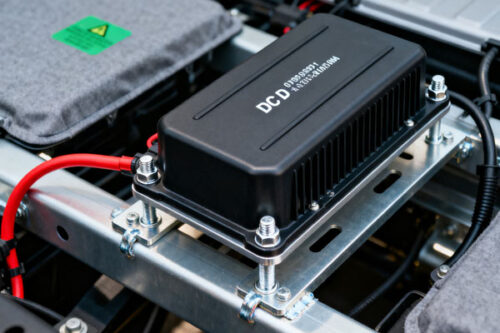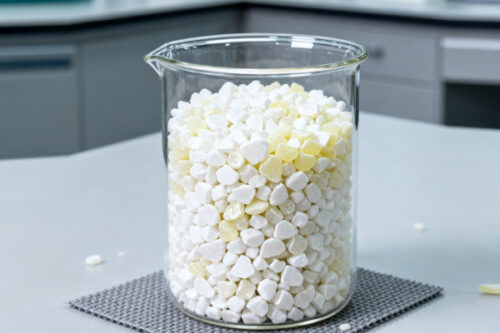What Is Expandable Braided Cable Sleeving?
The best cable management solution to help you organize your cables is braided cable sleeves. The wire bundle fits tightly over it, it is affordable, simple to install, and it can complete the task with barely any difference in weight or diameter.
Why Expandable Braided Cable Sleeving Works So Well
The effectiveness of expandable braided cable sleeving lies in its open-weave construction.
Because the sleeve is not solid, you can easily inspect the wires underneath or remove individual cables when needed.
Its flexibility allows it to conform to any shape, enabling cables to bend and move freely without restriction.
This braided sleeving also provides excellent mechanical protection, resisting cuts, abrasions, and impacts.
It helps prevent damage from sharp edges, vibration, and heat.
The woven design allows for airflow and heat dissipation, reducing moisture buildup and protecting cables in various environments.
Materials: Nylon, PET, polyester, PPS, or Nomex?
Braided cable sleeves come in a variety of materials, some better than others, giving you the properties you’re after. Here are five different industry favorites you should consider:
The wide extensibility of braided monofilament sleeving, as provided by nylon 6/6, makes it an ideal material for managing large bundles of wire. Nylon provides you with superior abrasion resistance, which makes it the best choice for cables and hoses exposed to excessive wear, such as cable assemblies and automotive applications.
Automakers often choose braided monofilament sleeves, such as nylon, to handle wire harnesses. This is due to the material’s flexibility, lightweight, and ease of installation. Nylon also provides excellent fluid resistance, making it ideal for wet applications.
Polyethylene terephthalate (PET) Braided Cable Sleeves
When environmental factors expose wires to gasoline, engine chemicals (typically automotive fluids), and cleaning solvents, PET is a smart choice for cable jackets. PET is also used to protect wires from heat. It can withstand extreme temperatures. However, keep in mind that PET jackets vary, so if you want thermal protection, check the specs for the specific product.
PET also has excellent abrasion resistance and a high expansion ratio, typically up to three times its resting diameter. If your bag is larger, PET is a good choice. It is also UV resistant, which is another reason it is suitable for outdoor applications.
Polyester Braided Cable Sleeves
Another highly flexible, strong material that can expand to three times its nominal diameter. It is easy to apply to irregular shapes and provides good insulation and abrasion resistance. It is also resistant to corrosion and high temperatures, which is why polyester is often used in appliances, electronics, and some automotive applications.
Polyphenylene Sulfide Monofilament (PPS) Braided Cable Sleeves
You’ll find PPS in high temperatures, flame-retardant wire harnesses, and cable assemblies. It is very light and can withstand the attack of solvents. Engineers love PPS for its resistance to chemicals, low moisture absorption, high-temperature stability, excellent dimensional stability, and extremely low wear. It does not work with steam, strong bases, fuels, and acids. For all these reasons, the aerospace and telecommunications industries have adopted PPS.
Nomex Braided Cable Sleeves
Nomex is a lightweight material with exceptional thermal stability and chemical resistance.
It can withstand exposure to high humidity, radiation, and extreme heat—making it ideal for demanding industrial and defense applications.
Nomex sleeving performs well under harsh conditions and resists most solvents and acids.
Braided cable sleeving materials: Best Characteristics
| Material | Abrasion resistance | Corrosion resistance | Flexibility | Lightweight | High-temperature stability | Chemical resistance | UV resistance | High-expansion ratio |
| Nylon | ✔ | ✔ | ✔ | |||||
| PET | ✔ | ✔ | ✔ | ✔ | ✔ | ✔ | ✔ | |
| Polyester | ✔ | ✔ | ✔ | ✔ | ||||
| PPS | ✔ | ✔ | ✔ | |||||
| Nomex | ✔ | ✔ | ✔ | ✔ |
Cable sleeving size guide
To find the correct size of braided sleeving that you need, follow these guidelines.
| Step 1. Measure the diameter of the cable bundle you intend on covering. |
| Step 2. Determine how you want the sleeve to fit around your cables: snug or loose for flexibility. |
| → For a snug fit: Go with braided sleeves with a slightly smaller diameter than that of your cables. |
| → For a loose fit: Opt for a diameter equal to slightly larger than that of your cables. |
| Step 3. Braided sleeving contracts, or shortens, slightly when it expands. Add a few millimeters when calculating your size. |



